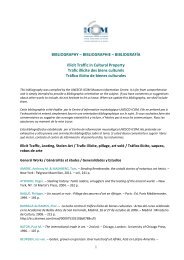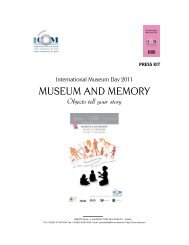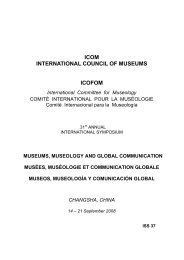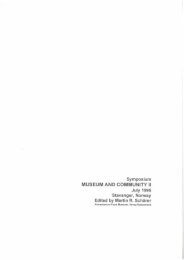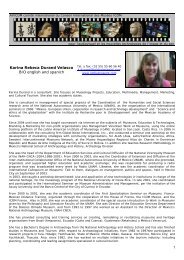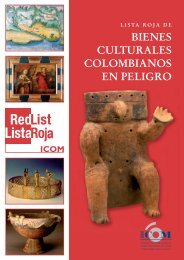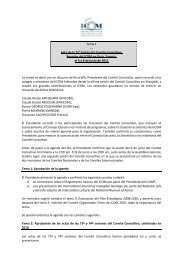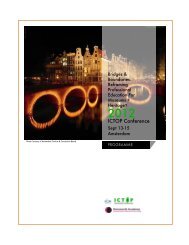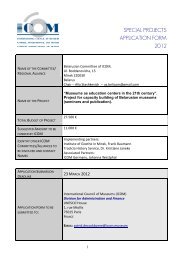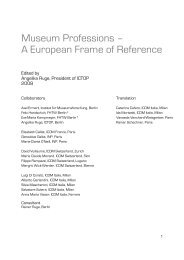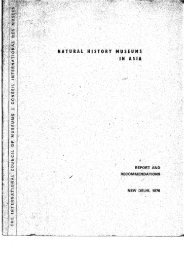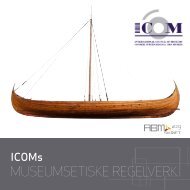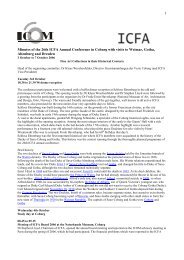Key Concepts of Museology - ICOM
Key Concepts of Museology - ICOM
Key Concepts of Museology - ICOM
You also want an ePaper? Increase the reach of your titles
YUMPU automatically turns print PDFs into web optimized ePapers that Google loves.
I NTRODUCTION<br />
20<br />
The museum world has evolved a great deal over the years, both<br />
in terms <strong>of</strong> its functions and through its materiality and the main<br />
elements upon which its work is built. In practical terms, museums<br />
work with objects which form their collections. The human element<br />
is obviously fundamental to understanding the way museums work,<br />
as much for the staff working within the museum – the pr<strong>of</strong>essionals,<br />
and their relation to ethics – as for the public for whom the museum<br />
is intended. What are the functions <strong>of</strong> museums? They carry out<br />
an activity that can be described as a process <strong>of</strong> musealisation and<br />
visualisation. More generally, we speak <strong>of</strong> museal functions, which<br />
have been described in different ways over time. We have based our<br />
research on one <strong>of</strong> the best known models, crafted at the end <strong>of</strong> the<br />
1980s by the Reinwardt Academie in Amsterdam, which recognises<br />
three functions: preservation (which includes the acquisition, conservation<br />
and management <strong>of</strong> collections), research and communication.<br />
Communication itself includes education and exhibition, undoubtedly<br />
the two most visible functions <strong>of</strong> museums. In this regard it seemed to<br />
us that the educational function had grown suffi ciently over the past<br />
few decades for the term mediation to be added to it. One <strong>of</strong> the major<br />
differences that struck us between earlier museum work and today is<br />
the growth in the importance attached to notions <strong>of</strong> management, so<br />
we thought that because <strong>of</strong> its specifi cities, it should be treated as a<br />
museum function. The same is probably true for museum architecture,<br />
which has also grown in importance to the point where it sometimes<br />
upsets the balance between other museum functions.<br />
How does one defi ne a museum? By a conceptual approach<br />
(museum, heritage, institution, society, ethics, museal), by theoretical<br />
and practical considerations (museology, museography), by its functions<br />
(object, collection, musealisation), through its players (pr<strong>of</strong>essionals,<br />
public), or by the activities which ensue from it (preservation, research,<br />
communication, education, exhibition, mediation, management,<br />
architecture)? There are many possible points <strong>of</strong> view which have to<br />
be compared to better understand the museum phenomenon, which is<br />
rapidly developing, the recent evolutions <strong>of</strong> which cannot leave anyone<br />
indifferent.



